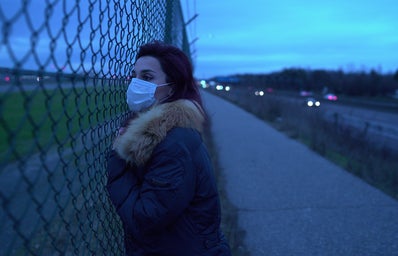If you have checked the news in the past few days or seen browsed social media, you are familiar with the word Coronavirus. The Coronavirus, that causes pneumonia, is a respiratory virus that has recently been discovered in China. Cases of the virus have also been reported in several other countries, including the United States.
What is Coronavirus?
Photo produced by the National Institute of Allergy and Infectious Disease (NIAID)
This is one form of coronavirus named, MERS-COV, that shows the crown-like spikes that helps identify the virus and gives it its name.
Coronaviruses are a group of viruses that cause respiratory illnesses with a range of symptoms, according to the CDC. Some symptoms are mild, like the common cold, while others are more likely to lead to pneumonia. The virus is usually spread through direct contact with an infected person.
According to the CDC, the human coronaviruses are most commonly spread through humans via: the air (from viral particles from a cough or sneeze), close personal contact (touching or shaking hands), an object or surface with viral particles on it (then touching your mouth, eyes or nose before washing your hands), and rarely from fecal contamination.
The virus gets its name from the crown-like spikes on its surface with the word corona meaning crown in Latin. The most recent outbreak is one of the seven different forms of coronavirus that can infect humans, according to the CDC.
The new form, named 2019-nCoV, is still very new to research. As of right now, we are still figuring out key factors of the virus like symptoms, incubation period, and vaccination. Currently, there is no vaccine to prevent it, but the National Institutes of Health and the drug company Regeneron are both in the early stages of potential treatment for this coronavirus.
When and How Did It Start?
Photo by James Wainscoat
The most recent virus first popped up in Wuhan, China in people who had likely visited a local seafood and animal market, called the Huanan Seafood Market. Officials say it is likely that it was transmitted from an animal to humans and in a new study, the virus was found that the most closely related viruses were two coronaviruses originated in bats. These coronaviruses shared 88% of their genetic sequence with that of the recent coronavirus outbreak, 2019-nCoV. However, no bats were sold at the Huanan Seafood Market, which suggests that there is another animal, that has yet to be identified, that transmitted the virus to humans.
The virus has spread from China due to the multitude of travelers in the country. Since symptoms take around 14 days to show, a person may be infected and travel from China to another country and infect others without knowing.
Many precautions have also been taken to prevent the spread of the virus. The CDC announced that it recommends that travelers avoid all non-essential travel to all of China due to the outbreak. In China, the government announced that it was banning the sale of wildlife at markets, restaurants, and online in hopes to prevent future outbreaks of zoonotic diseases. The Chinese government has also stopped most of the travel to and from Wuhan as well as 12 nearby cities, according to the New York Times. Screening in the United States has been increasing at many ports of entry, including airports.
Coronavirus Updates as of Thursday, Jan 30:
The New York Times reported that the virus seems to be spreading overseas, outside of China, with cases in Germany, Japan, Taiwan and Vietnam.
There is a global total of 7,783 individuals who have been confirmed with the new coronavirus, according to the John Hopkins virus dashboard. 7,680 of the individuals are from mainland China.
There are 170 deaths linked to the virus globally.
In the United States, there are currently five individuals who have contracted the virus. All of these individuals recently visited Wuhan and returned to the States.
The CDC recommends proper handwashing as the simplest form of prevention against the virus. While there are no reported cases at the University, proper handwashing is still important to prevent other viruses going around like the flu.
For more information on the spread of the virus, John Hopkins University has set up a live dashboard which shows the spread of the virus. This dashboard can be found at: https://gisanddata.maps.arcgis.com/apps/opsdashboard/index.html#/bda7594740fd40299423467b48e9ecf6 .
This information was updated on January 30, 2020.


